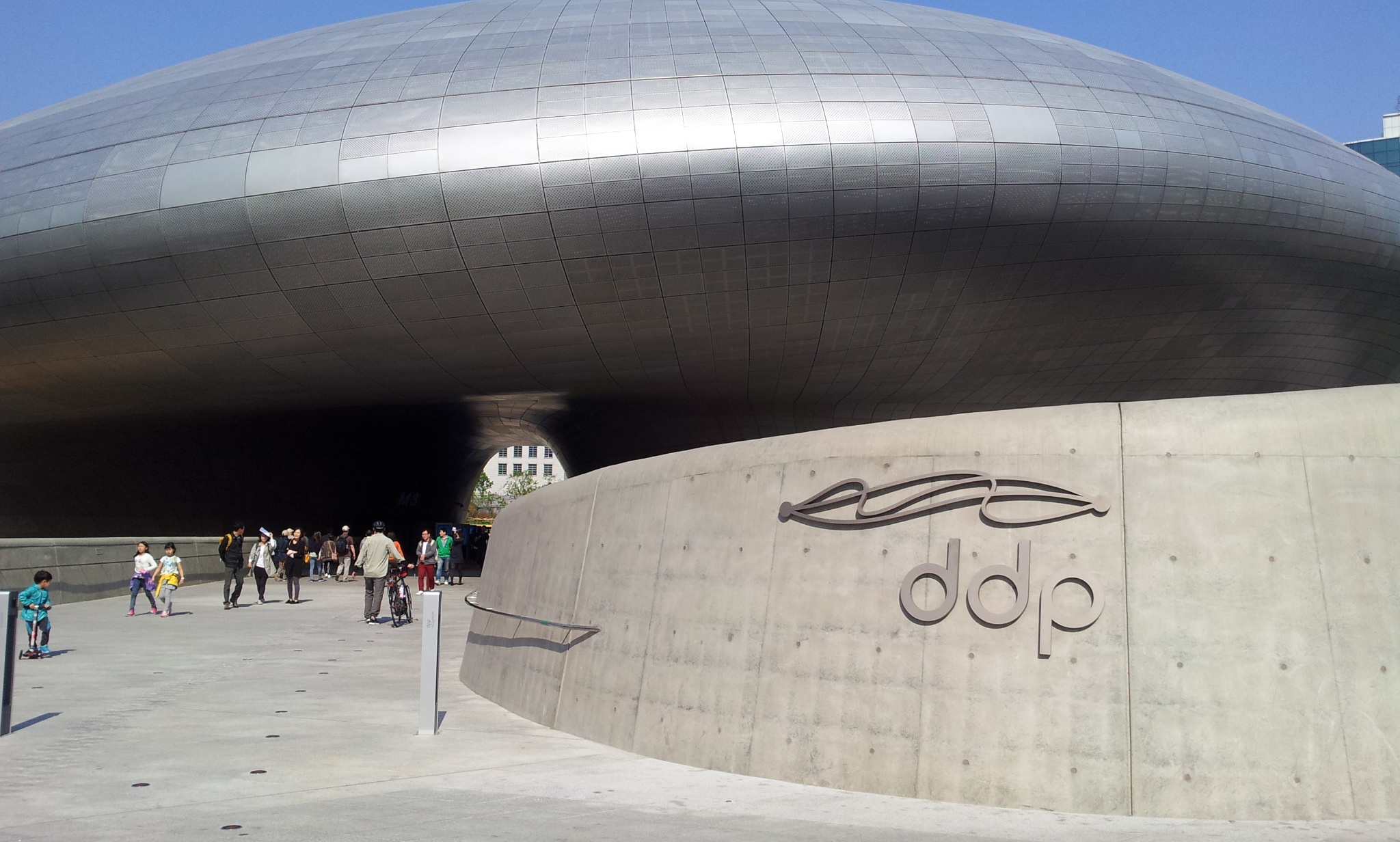DDP (Dongdaemun Design Park plaza), designed by Zaha Hadid, is an extremely controversial architecture in Seoul, Korea. Some argue that it is neither functional inside nor goes well with neighbors; they view it as a dead space next to a naturally dynamic communities. Others, however, argue that this building cannot be judged by the contemporary perspective; they believe it become the landmark of the city in the future, just as Eiffel Tower.
Here is the introduction on the Zaha Hadid’s website:
“The DDP has been designed as a cultural hub at the centre of Dongdaemun, an historic district of Seoul that is now renowned for its 24-hour shopping and cafes. DDP is a place for people of all ages; a catalyst for the instigation and exchange of ideas and for new technologies and media to be explored. The variety of public spaces within DDP include Art/Exhibition Halls, Conference Hall, Design Museum/Exhibition Hall/Pathway, Design Labs & Academy Hall, Media Centre, Seminar Rooms and Designers Lounge, Design Market open 24 hours a day; enabling DDP to present the widest diversity of exhibitions and events that feed the cultural vitality of the city.”
For now, a wide variety of shops run their own businesses in the building. They sell design products and books. It is worth a visit.

Dongdaemun Design Plaza (DDP) is a complex cultural space that ended up costing over three times the initially estimated budget during the investment assessment. This building, which required an investment of $400 million for construction, was highly acclaimed during its construction as the world’s largest 3D irregular structure. There have been mixed opinions about DDP; while it’s seen as a challenging and innovative structure, some believe that it doesn’t align well with the practicality or historical symbolism of Dongdaemun and its surroundings. Given its substantial cost and potentially challenging revenue structure, my perspective on DDP is positive.
Firstly, I find the architectural design of the building quite appealing. Initially, upon my first visit and seeing its exterior, I also felt a sense of unfamiliarity. The use of curved aluminum panels on a structure of this scale was something I hadn’t encountered before, making it somewhat hard to grasp realistically. However, my perception changed with subsequent visits for various purposes. The dominance of curves and the feeling within a building of such magnitude is an experience unlike any other. It’s truly impressive how diverse facilities such as exhibition spaces, areas for relaxation, promenades, transit areas, and performance spaces seamlessly connect, forming a cohesive structure.
Secondly, as previously mentioned, DDP attracts a multitude of people with diverse purposes in mind. According to the DDP official website archive, there have been over 514 different types of events. Over 11 years, it has hosted events like Seoul Fashion Week twice a year and various art exhibitions on the first floor, offering a wide array of attractions as a multifaceted cultural space. Occasionally, events allowing direct purchase of products from small businesses or engaging in hands-on crafting activities further utilize the advantages of this grand building. Unlike conventional buildings divided between exterior and interior spaces, the smooth curves of this building create different atmospheres depending on the location and activity within, thereby attracting and engaging diverse crowds. This bears a resemblance to Pine.B.J & Gilmore,J.H’s ‘The Experience Economy.’ The concept involves consumer experience gained by directly participating in the process of production or service. The DDP, in my opinion, aligns with each of its elements – Entertainment, Educational, Escapist, and Esthetics. Despite its design feeling detached from reality, its unique and varied spatial layout, combined with a wide range of events and exhibitions, creates a unique experience exclusive to DDP visitors.